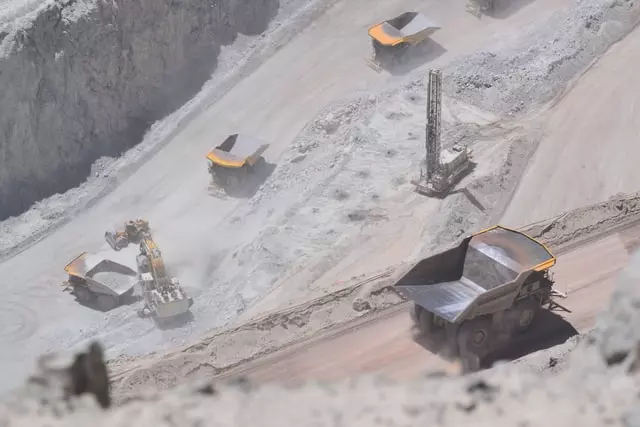The suspension of nickel prices on the London Metal Exchange (LME) in March now has a legal aftermath.
US hedge fund Elliott Associates is suing the London Metal Exchange (LME) for US$456 million for cancelling nickel trades on 08 March, the first chaotic day.
Elliott said the LME should not have halted trading and cancelled trades after prices more than doubled to over $100,000 a tonne in a matter of hours on 8 March.
It is certainly very difficult to come to terms with this after the event because, on the one hand, if trading had not been suspended and positions subsequently cancelled, billions of dollars in debt would have been incurred and the LME would have technically become insolvent.
On the other hand, the LME is accused of having been able to see the "storm clouds" on the Friday before the closure on Tuesday.
Because of the impact and reputation of the LME, British financial authorities already launched an investigation on 4 April into how the LME had shut down chaotic nickel trading in March.
More detailed information on this e.g. at Reuters:
Hedge fund Elliott sues LME for $456 million over nickel trading haltThe nickel price has settled at $ 33,000/t on the LME in the last few days. Thus, trading seems to have returned to normal and is moving in an orderly manner and our alloy surcharge forecasts have regained their usual accuracy.
Apparently the market is not as bearish as assumed, so that nickel on the LME is currently (intraday) settling at around $ 35,000 - 36,000/t. It remains to be seen whether the fundamental traders will drive the price down or whether the more emotional trading participants will have the upper hand and allow the price to rise further.
The LME has the problem that the very high starting point of 7 March ($ 42,995/t) is not fundamentally justified, but arose due to the short squeeze.
It is now trying to get back into normal trading with predefined fluctuation margins.
The way this works is that they set a fluctuation range, initially 5%, now 15%. If these limits are breached with downward trades, only an unofficial price is given and the new fluctuation band of the next day applies to this, lower value.
Thus, the unofficial price decreases daily until the market price is reached at some point.
In our opinion, this should happen shortly, when we reach the pre-crisis level of $23,000 - $25,000/t
quickly as possible.
How the price will now develop remains to be seen. However, it seems clear that the price peak on 08.03.22 was a speculative exaggeration and that the nickel price could move towards $ 30,000/t again.
You can find the current reports and course dates of the LME under this link:
https://www.lme.com/Metals/Non-ferrous/LME-Nickel#Price+graphs
Possible causes of the turbulence in nickelAs is so often the case, there are several reasons that led to the current situation.
Firstly, the nickel market has come under strong pressure due to the Ukraine war, as there was a risk of sanctions being imposed on Russian nickel producers. To our knowledge, this has not happened to date, but there was panic buying, which put pressure on the nickel price.
Secondly, these price increases put pressure on the largest nickel producer, Tsingshan Holding Group in China, as they had hedged their production with short positions against price fluctuations. Due to the extreme increase in nickel prices, the costs of hedging became so high that some positions had to be liquidated. Closing out a short position can only take place with additional purchases, which then also caused the price to shoot up in the short term.
This behaviour, known as a short squeeze, has been seen more often on the stock market. A popular example was the VW share price in 2008, which rose to a spectacular 1000 €/share in one day. Usually, after the short squeeze has passed, the price settles at a slightly higher level than before.
The nickel market is a small market compared to other commodity markets and therefore reacts very sensitively, as we have seen time and again with price jumps due to actions by individual participants.
The first (provisional) nickel prices after the opening of trading on the LME clearly show that the high prices on March 8th, 2022 were speculatively excessive.
In which direction will the nickel move now?If you look at the Shanghai stock exchange, which has been open for days, you see prices at the equivalent of around $35,000/t. In our opinion, this would be the first goal. It remains to be seen whether it will go down further.
Alloy surcharges initially increase.The impact on the alloy surcharge is delayed. We expect near-term historic highs, but these will probably not last, so that the alloy surcharge will fall in the medium term. Also because Indonesia, among others, announced its intention to completely compensate for the possible loss of nickel volumes from Russia. For this purpose, significant production volumes are to be expanded in the short term. Whether all the necessary nickel grades can be offered, however, was left open by Indonesia, but presumably lower-quality grades will be thrown onto the market.
Stay up to date with LZ-prognose.de.We forecast the alloy surcharge 2 months into the future quite accurately, even in these turbulent times, and keep you informed of any relevant news.
Test us 6 weeks free of charge and without obligation. You get full access to all forecasts.


